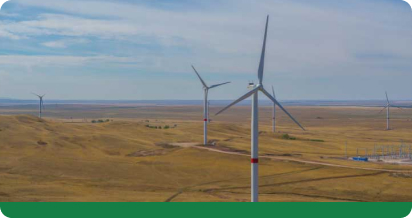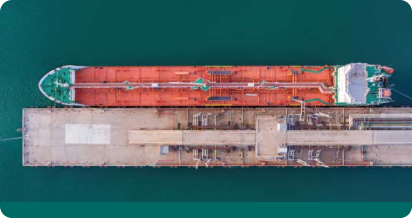One of the most important challenges to modern humanity is the steady decline of biological diversity on the planet. Among scientists, it is customary to talk about the Sixth extinction of species caused solely by the results of human activity. The 15th meeting of the Conference of Parties to the UN Biological Diversity Convention (COP15) held in Canada in 2022, which resulted in the signing of the Kunming-Montreal Framework Program in the field of biodiversity, is considered to be a key event that determined the relevance of biological diversity issues for the world community in the coming years.
The investment market has also demonstrated significant increase in attention to these issues. Thus, the work of the Taskforce on Nature-related Financial Disclosures (TNFD), which unites financial institutions, corporations and market service providers managing a total of USD20 trillion, was intensified. The world’s leading rating agencies have also begun to adapt their products to the issues of biodiversity conservation. For example, the rating agency, MSCI, has developed solutions for geoinformation analysis of biodiversity risks.
Having a large volume of production assets and a wide geographical presence in regions of Kazakhstan, the Fund considered it necessary to keep up with global trends and put the conservation of biological diversity among the important priorities. Despite the absence of a unified strategy in the field of biodiversity conservation for the Group of Companies in 2022, this issue is under the close attention of the Fund’s management as part of the disclosure processes in the sustainability reporting.
At the same time, we have been paying attention to the issues of biological diversity since 2017. In 2022, some Portfolio Companies of the Fund Group, such as Kazakhtelecom JSC, JSC NAC Kazatomprom, developed and approved guidance documents on managing impacts on biodiversity.
In this report, we begin the practice of disclosing a consolidated position on the impact on biodiversity. In the future, we intend to pay as much attention as possible to the assessment of risks and opportunities associated with the conservation of biodiversity. GRI 3-3
Potential impact in the areas of operation and by type of activity
The companies of the Fund Group have different scales, areas of activity and geographical presence. In view of this circumstance, the possible ways of the impact of the Fund Group’s activities on biodiversity may vary greatly.
Significant linear infrastructure
The Fund Group is cumulatively present in all regions of the Republic of Kazakhstan. First of all, this applies to companies with extensive linear infrastructure. In particular, the main oil and gas pipelines of KazTransOil JSC and QazaqGaz JSC, the main overhead power transmission lines of KEGOC JSC, overhead power transmission lines of electric power distribution companies of Samruk-Energy JSC, railway tracks of JSC NC Kazakhstan Temir Zholy, cable telecommunication networks of Kazakhtelecom JSC are laid along many, and in some cases, in all regions of Kazakhstan. Such infrastructure affects, as a rule, forest-steppe, near-water, steppe, semi-desert and desert biotopes, which are found mainly on shallow, hilly and flat terrain.
The infrastructure of some of these Portfolio Companies and/or their subsidiaries runs near or through significant areas for the conservation of biodiversity: key biodiversity territories, key ornithological territories or specially protected natural territories.
The main aspects of the negative impact of Portfolio Companies with significant linear infrastructure on biodiversity are:
- obstruction of railway tracks, artificial fences, embankment dams, expressways to the migration routes of ungulate mammals;
- death of animals on railway tracks and highways;
- death of birds from electric shock on medium-power overhead power lines and substation equipment under operating voltage;
- death of birds from collisions with overhead power lines, as well as during maintenance work on these lines.
Portfolio Companies of the Fund recognize the listed risks and implement measures aimed at minimizing them.
For example, in order to minimize death of birds from electric shock on overhead lines, Portfolio Companies are working on the installation of bird protection devices, as well as planned retrofitting of 6-10 kV overhead lines with pin insulators on overhead lines made with self-supporting insulated wire (SIW-3).
Also in 2022, the Scientific and Technical Council of the Fund approved the research project of JSC NAC Kazatomprom – Comprehensive Studies on the Bird Protection from the Power Lines Effect at Enterprises of JSC NAC Kazatomprom. This project was the first scientific project in the Fund group of companies, which is aimed at reducing death of birds on overhead lines.
Oil and gas production fields
Oil and gas producing enterprises, as well as enterprises that render them services are included in the separate category of the Fund Group. Oil and gas producing companies included in the Fund group are stationary and located mainly in western regions of Kazakhstan, in desert and semi-desert biotopes. Some deposits are located in the Caspian Sea and represent a special group of risks to biodiversity.
Thus, the water area of the eastern part of the Northern Caspian Sea with its wetlands and deltas of the Volga rivers (within the Republic of Kazakhstan), the Urals and the Emba, as well as the adjacent coast and the water area of the sea itself, are the most important lands on the Eurasian continent and are included in the state protected area in the northern part of the Caspian Sea. These lands ensure the existence of millions of waterfowl and near-water birds during nesting, molting, seasonal migrations and wintering. One of the largest in Eurasia, the Siberian-Black Sea-Mediterranean Flyway, runs through the Northern Caspian.
The main aspects of the negative impact of oil and gas companies on biodiversity are:
- a concern factor for caspian seals;
- mechanical contamination of birds and seals with oil and petroleum products;
- harm to ichthyofauna and seals as a result of accidental/unauthorized releases of toxic substances into the Caspian Sea;
- toxic effect of petroleum hydrocarbons on open evaporation fields;
- death of near-water birds sitting on evaporation fields;
- death of birds from electric shock on overhead power lines and substation equipment under operating voltage;
- a concern factor in the construction of new wells and related infrastructure;
- degradation of plant communities as a result of the expansion of the fishing road network.
In addition to measures aimed at minimizing risks to biodiversity, the Fund Group also implements compensatory measures in order to compensate for the damage caused. So, the service company, Zhenis Operating LLP, together with Atyrau Sturgeon Hatchery RSE in 2022 carried out work on the cultivation of juvenile sturgeon fish with a weight of 1.5 grams in the amount of 28 123 pcs. for KZT1 406.2 thousand with their subsequent release into the Ural River.
Mining companies
The Fund Group includes enterprises of the mining sector. These include the mining enterprises of JSC NAC Kazatomprom and JSC NMC Tau-Ken Samruk.
JSC NAC Kazatomprom, which is a shareholder in several uranium mining enterprises in Kyzylorda, Turkestan, Zhambyl and Akmola regions, as well as an energy transmission company with a significant length of overhead lines, in 2022 continued to implement the roadmap for the implementation of the Environmental and Social Action Plan (ESAP), which provides for periodic research work on assessing the impact on biodiversity.
The technology of mining operations (both in open and closed mining operations, as well as in underground borehole leaching) assumes the presence of a risk of negative impact on the existing ecosystem. Among the main aspects of the negative impact are the following:
- the anxiety factor from blasting and drilling operations, light noise, etc.;
- direct damage to existing plant communities;
- unauthorized and emergency discharges, spills of leaching and productive solutions;
- death of animals on commercial roads;
- death of birds from electric shock on medium-power overhead power lines and substation equipment under operating voltage;
- a concern factor in the construction of new wells and related infrastructure;
- degradation of plant communities as a result of the expansion of the fishing road network.
Electricity generation
Samruk-Energy JSC owns a group of energy companies, most of which are energy-generating companies. Some power plants of Portfolio Companies are located in the immediate vicinity of significant areas for the conservation of biodiversity.
Hydroelectric power plants, an electric grid company, and wind farms can have the greatest potential impact on biodiversity issues. This is largely due to the climatic and physical features of the location of power plants, as well as their functional role. For example, hydroelectric power plants are usually located in the upper reaches of mountain rivers or on dams of reservoirs, where, as a rule, a very rich variety of biological species, both aquatic plants and animals, and terrestrial. In addition, the regulation of the water level in the dam involves periodic revision of the level in the river downstream, if the capacity of the counterregulator is insufficient to maintain a stable level in the river downstream. The location of wind power stations in places with a large wind load in some cases coincide with bird migrations.
The main aspects of the negative impact of hydroelectric power plants and wind power stations on biodiversity are:
- death of ichthyofauna (eggs), aquatic invertebrates, aquatic plants, some waterfowl and near-water birds with significant changes in the water level in rivers and/or other bodies of water;
- death of birds from collisions with wind turbines;
- death of birds from electric shock on medium-power overhead power lines and substation equipment under operating voltage;
-
death of birds from collisions with overhead power lines, as well as during maintenance work on overhaul lines.
Other activities
The Fund group of companies also includes other companies in the transport, construction and service sectors, whose impact on biodiversity has not been assessed now.
Further growth areas
- Comprehensive scientific research on the study of biodiversity in large Portfolio Companies (JSC NC KazMunayGas, Samruk Energy JSC, JSC NMC Tau-Ken Samruk)
- Development of unified approaches to risk management of impacts on biodiversity and disclosure of information at the Fund level;
- Public assurance procedure;
- Financing of environmental protection measures (sponsorship of certain types);
- Active involvement of NGOs in improving biodiversity management procedures.



